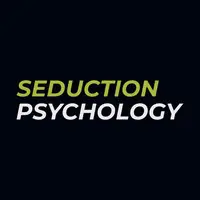In a world where information is abundant and trust is often tested, the ability to discern truth from deception becomes a crucial skill. Whether in personal relationships or professional encounters, knowing when someone is lying can save us from potential harm, disappointment, or deceit. While uncovering lies may seem like an insurmountable challenge, this article aims to equip you with the tools necessary to become an adept lie detector. Through the exploration of five key points, we will delve into the fascinating world of deception, unraveling the intricacies of human behavior and body language. By mastering the art of detecting lies, you will gain an invaluable edge in navigating the complexities of human interaction.
- Microexpressions and Facial Cues
- Inconsistencies in Verbal and Nonverbal communication
- The Power of Proxemics and Body Language
- Verbal Patterns and Speech Analysis
- Behavorial Clusters and Contextual Analysis
1. Microexpressions and Facial Cues
The face serves as a gateway to the truth, often betraying our deepest emotions, even when we attempt to conceal them. Microexpressions, fleeting facial expressions that last only a fraction of a second, provide vital clues about a person’s honesty. Paying close attention to their eyes, eyebrows, and mouth can unveil hidden emotions, contradicting their spoken words. When someone is lying, they may involuntarily display microexpressions such as fleeting moments of fear, anger, or surprise.
2. Inconsistencies in Verbal and Nonverbal Communication
When someone is lying, inconsistencies often arise between their verbal and nonverbal communication. Our bodies have a way of revealing the truth, even when our words do not align. Detecting these inconsistencies requires careful observation. Look for subtle cues such as fidgeting, avoiding eye contact, or covering the mouth during speech. Vocal cues, such as a change in pitch or excessive clearing of the throat, can also indicate deception. By paying attention to these incongruities, you can unearth hidden truths.
3. The Power of Proxemics and Body Language
Understanding the language of the body can significantly aid in detecting deception. Proxemics, the study of personal space, can shed light on a person’s comfort level and intentions. When someone is lying, they may display signs of discomfort, such as crossing their arms, leaning away, or adopting a defensive posture. In contrast, liars may also use excessive gestures or movements to distract and redirect attention. By carefully observing these nonverbal signals, you can unravel the truth beneath the surface.
4.Verbal Patterns and Speech Analysis
Speech analysis plays a crucial role in detecting lies, as the words we choose and the way we deliver them can reveal hidden truths. Liars often use a variety of verbal patterns to deceive, such as excessive qualifiers, deflection, or evasion tactics. They may also exhibit unusual speech patterns, including excessive pauses, stammering, or an overuse of fillers like “uh” or “um.” By attentively listening to these verbal cues, you can expose the web of deception woven by a liar.
5. Behavioral Clusters and Contextual Analysis
Deciphering deception often requires a holistic approach that takes into account various behavioral clusters and contextual analysis. By examining multiple aspects of a person’s behavior and considering the broader context, you can enhance your ability to identify lies.
Behavioral clusters refer to the combination of verbal and nonverbal cues that occur simultaneously. Instead of focusing on individual cues, observing clusters provides a more accurate assessment of deception. For instance, if someone avoids eye contact, displays fidgety behavior, and provides vague or inconsistent responses, these behavioral clusters may indicate dishonesty.
Contextual analysis involves considering the specific circumstances surrounding a conversation or interaction. Understanding the context can help you evaluate the likelihood of deception. Factors such as the person’s baseline behavior, their motivation to lie, and the stakes involved can all influence their honesty. Additionally, cultural norms and individual personality traits should be considered when analyzing the context.
Conclusion
Detecting lies is a complex art that requires a keen eye, attentive listening, and a deep understanding of human behavior. By honing your skills in deciphering microexpressions, recognizing inconsistencies in verbal and nonverbal communication, interpreting body language, analyzing speech patterns, and considering behavioral clusters within their relevant contexts, you can become a proficient lie detector.
Remember, no single cue can definitively prove or disprove deception. It is the amalgamation of these various points that offers a more comprehensive picture. Developing these skills will not only enhance your ability to protect yourself from deception but also enable you to cultivate stronger relationships based on trust and authenticity.
As you embark on this journey, remain aware that deception is a nuanced phenomenon, and even the most experienced lie detector can be deceived. Therefore, approach your assessments with humility, empathy, and a commitment to understanding the complexities of human communication. With practice, patience, and a curious mind, you will sharpen your ability to uncover the truth and navigate the intricacies of human interaction with greater confidence.
